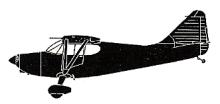
ASN Wikibase Occurrence # 233809
This information is added by users of ASN. Neither ASN nor the Flight Safety Foundation are responsible for the completeness or correctness of this information.
If you feel this information is incomplete or incorrect, you can submit corrected information.
| Date: | Thursday 25 February 2016 |
| Time: | 11:30 |
| Type: |  Stinson 108 3 |
| Owner/operator: | Whalen Frank And Epperson Mark |
| Registration: | N862C |
| MSN: | 1083862 |
| Year of manufacture: | 1947 |
| Total airframe hrs: | 1923 hours |
| Engine model: | Franklin 6A4165 SERIES |
| Fatalities: | Fatalities: 0 / Occupants: 2 |
| Aircraft damage: | Substantial |
| Category: | Accident |
| Location: | Livermore, CA -
 United States of America United States of America
|
| Phase: | Landing |
| Nature: | Private |
| Departure airport: | Tracy, CA (TCY) |
| Livermore, CA (LVK) | |
| Investigating agency: | NTSB |
| Confidence Rating: |
**This report was modified on February 20, 2020. Please see the public docket for this accident to view the original report.**
The pilot reported that during the landing on runway 25L in the tail-wheel equipped airplane, it touched down in a three-point landing attitude on the centerline. Shortly thereafter, it started to veer to the right. The pilot applied full left rudder and brake application; however, the airplane continued to veer off the right edge of the runway into tall grass and ground looped. The airplane sustained substantial damage to the left wing.
While taxiing the airplane back to the hangar, the pilot stated that he noticed that the wind was blowing from the northeast and that runway 7L was now in use. He also noticed that the left rudder/brake pedal required more travel distance than the right pedal, with reduced brake effectiveness on the left side.
The National Transportation Safety Board's (NTSB) postaccident examination of the brake system found no evidence of preimpact mechanical malfunctions or failures were revealed that would have precluded normal operation. Subsequent to the NTSB's examination, a mechanic examined the tailwheel unit and found that it was loosely mounted and that the steering springs were weak. The mechanic then disassembled the tailwheel unit and found that the mount hole was excessively large and that a dowel and compression spring were worn. The mechanic's findings were consistent with wear over time and not a sudden failure. Thus, the issues with the tailwheel assembly existed before the accident and likely contributed to the uncommanded right turn; however, with appropriate braking, the pilot should have been able to regain directional control and keep the airplane on the runway.
The airplane's last annual inspection before the accident occurred on August 20, 2015. The issues with the tailwheel assembly would have developed over a period of time that was much longer than the 6 months between the annual inspection and the accident. Thus, maintenance personnel should have detected the tailwheel assembly issues during the annual inspection.
Probable Cause: The pilot's failure to maintain directional control during the landing roll. Contributing to the accident was maintenance personnel's failure to detect the worn tailwheel assembly during the airplane's annual inspection.
Accident investigation:
 |
|
Sources:
NTSB
Location
Revision history:
| Date/time | Contributor | Updates |
|---|---|---|
| 10-Mar-2020 09:40 | ASN Update Bot | Added |
Corrections or additions? ... Edit this accident description
The Aviation Safety Network is an exclusive service provided by:


 ©2024 Flight Safety Foundation
©2024 Flight Safety Foundation